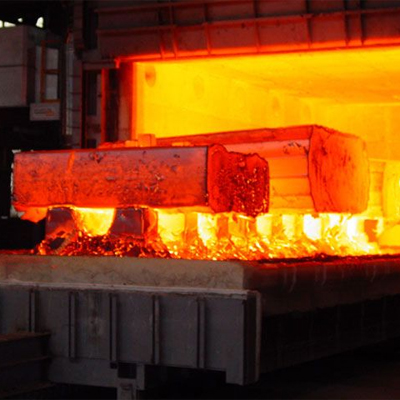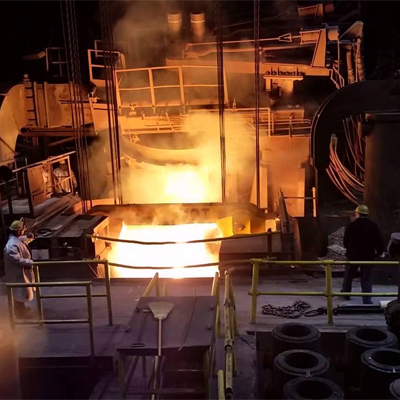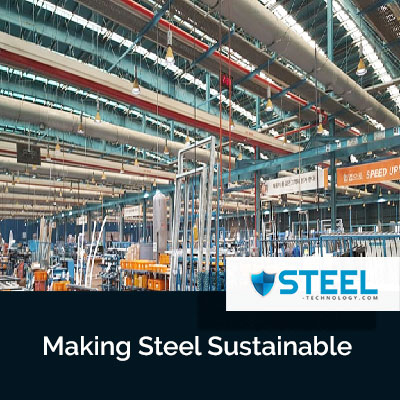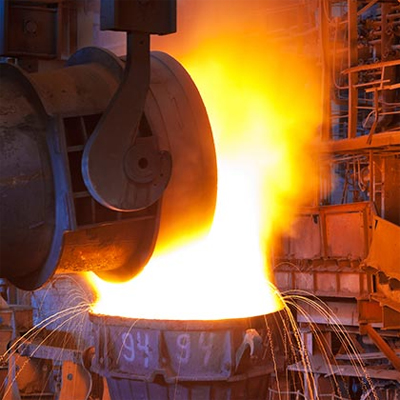Metallurgy

Metallurgy is a domain of metallic elements physical and chemical behavior and a whole, it is technology of metals that is applied to practical use. There are various types in this metallurgy process that are applied at various stages or purposes.
Extractive metallurgy is the practice of removing or separating valuable metals from an ore and refining the extracted raw metals into a pure form. In order to convert a metal oxide or sulfide to a purer metal, the ore must be reduced physically, chemically, or electrolytically. After mining, large pieces of the ore are broken by crushing and/or grinding in order to obtain particles small enough where each particle is either mostly valuable or mostly waste.
Hence, Extractive Metallurgy
- Deals with the fundamentals of thermodynamics and kinetics of the reaction processes
- Focuses on pyrometallurgical, hydrometallurgical, halide and electro-metallurgical (conversion) processes
- Deals with the industrial processing operations, technologies, and process routes.
Pyrometallurgy is a branch of extractive metallurgy that consists of the thermal treatment of minerals and metallurgical ores and focuses to bring physical and chemical transformations in the materials to enable recovery of valuable metals. This method of treatment may produce saleable products such as pure metals, or intermediate compounds or alloys, suitable as feed for further processing. Pyrometallurgy is the treatment of ores at high temperature to convert ore minerals to raw metals, or intermediate compounds for further refining. Roasting, smelting and converting are the most common pyrometallurgical processes.
The pyrometallurgical processes require energy input to sustain the temperatures during the process. This energy is usually provided in the form of fossil fuel combustion, exothermic reaction of the material, or from electrical heat.
Hydrometallurgy involves the use of aqueous solutions to extract metals or compounds from their ores. Some of the hydrometallurgical processes include leaching, precipitation of insoluble compounds, pressure reduction.
In the recent trends of metallurgy didn't remain not only as a process at the metal industries, but also an area of business and consultation.
Metallurgy Testing, Analysis and Consulting Services
Intertek metallurgical expertise has applications and services those serve a wide range of client needs. The state-of-the-art analysis, consulting, and on-site metallurgical investigations are equipped by Intertek to meet challenging customer needs. The metallurgy analysis and testing services include chemical, mechanical, micro/macro, destructive and non-destructive testing for a wide range of metal materials or products. Intertek metallurgical and analytical laboratories has expertise in failure analysis of fracture, creep, fatigue, wear, deformation, contamination, corrosion control, materials evaluation & development, and more. The Intertek's metallurgical laboratory clients benefit from its expertise in various applications in general manufacturing, consumer products, energy, transportation and marine and many other industries.
Metallurgy in Production Engineering
Metallurgy in production engineering is concerned with the production of metallic components that are used in consumer or engineering products. So, this involves the production of alloys, their shaping, heat treatment and the surface treatment of the product. While, the process involves metallurgist balance between material properties such as cost, weight, strength, toughness, hardness, corrosion, fatigue resistance, and performance in temperature extremes, because in saltwater environment, ferrous metals and some aluminium alloys corrode quickly.
Secondary Metallurgy
Danieli is one of the global suppliers of installations and equipment for the global metals industry. The company is known for its competitive equipment, simplify layouts and maximize the use of automation. The secondary metallurgy units for heat sizes from 20 to 350 t provide optimized meltshop sequences, reduce costs, and ensure the highest quality standard even with the most complicated steel grades. Ladle furnaces feature inert roof with controlled atmosphere and swing-roof for two treatment positions. VD/VOD degassing systems -in single or twin-tank configuration- feature combined steam ejector / water ring or full-steam ejector pumps. Oxygen lances are provided for deep decarburization of ULC and stainless steels, with reduced metal losses. Danieli also has process control software for electric steelworks, secondary metallurgy and continuous casting. Hence, the company is active in the secondary metallurgy plant sector, supplying furnaces and continuous casting machines and, in addition, designing, manufacturing and selling induction hardening plants for heat treatment in general, together with other plant in the "out of furnace" area.
Metallurgical machinery needs many other spare parts and equipment. This market is another wide scope for the existing and new players in the industry. The secondary metallurgy equipment ensures that the exact temperature and precise chemical composition of the steel are attained. Few of the major products of metallurgical Industry are
- Foundry, Casting and Forging Devices
- Minerals Exploration Equipments
- Wires, Tubes and Pipes
- Power and Hardware Tools
- Refractories, Chemicals, Additives
- Metal Working Devices
- Safety and Rescue Equipments
SMS group's state-of-the-art concast process technologies are combined with durable components. The design and process control of the ladle furnaces are executed with long electrode service lives in mind. For steel mill operators this means increased output with minimal operating costs. SMS Concast builds ladle furnaces as a single or double ladle station with a turret or carousel layout. The vacuum degassing plants produce liquid steel of the highest purity. The sulfur, hydrogen, nitrogen and oxygen content in the melt are significantly reduced. SMS Concast plants attain high efficiency levels here. The process of producing stainless steel involves the melt in the vacuum oxygen decarburization system is subjected to secondary metallurgical processes.
Recent period India turned one of the largest metallurgical industries in the world and the credit goes for the several existing Iron and Steel factories in India and its massive iron ore deposits. The Indian industry has performed really well and provided an impetus to the global market and can be said to be the founder of World Metallurgical Industry.









